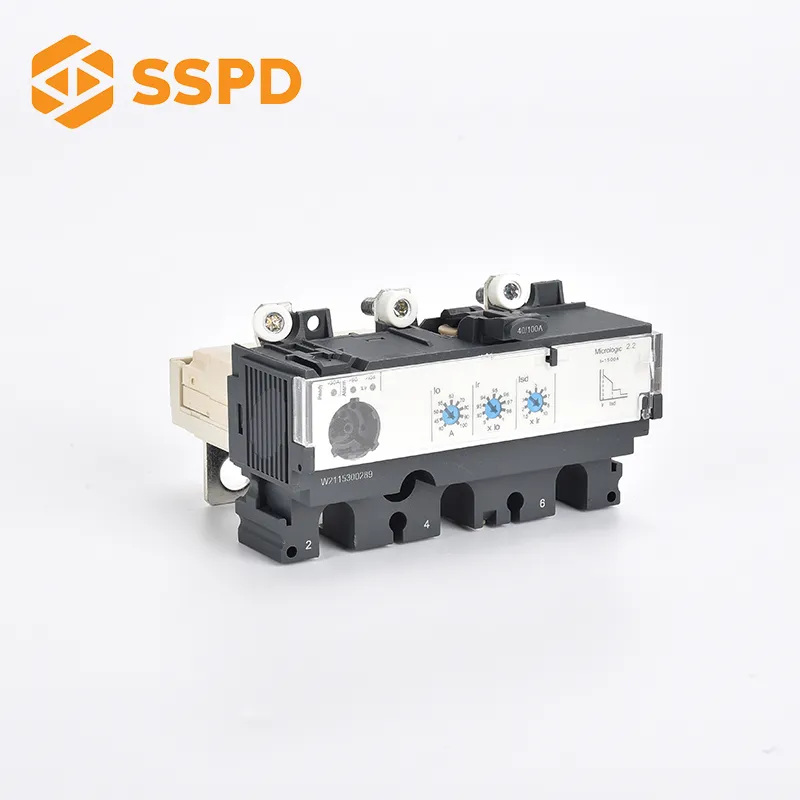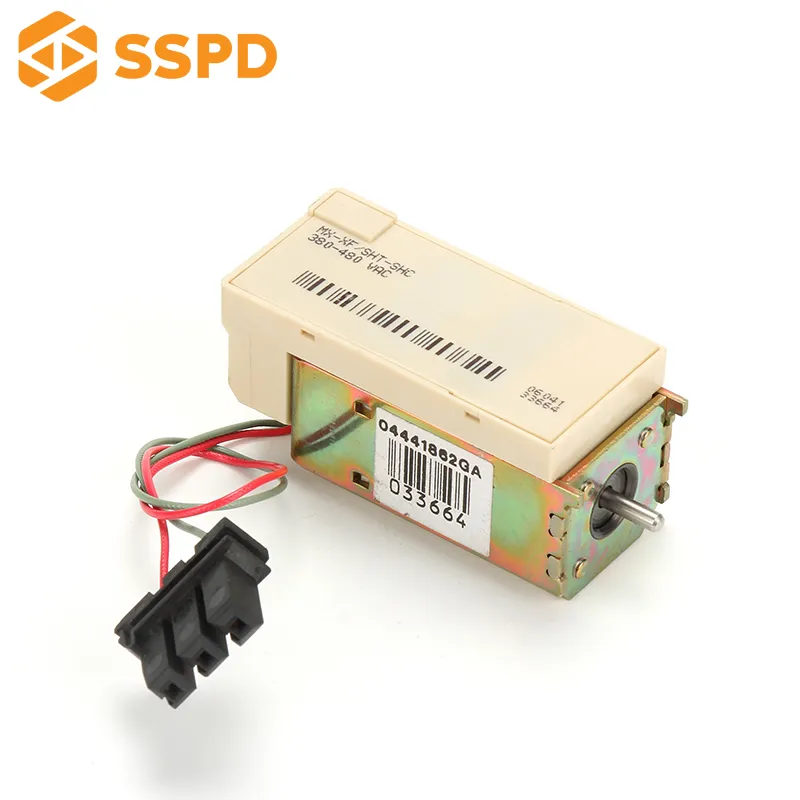What is a molded case circuit breaker?
A molded case circuit breaker (MCCB) is a type of electrical protection device designed to prevent overcurrent and short circuit conditions that could damage electrical systems or cause fires. These devices are commonly used in industrial, commercial, and residential settings to ensure the safety of electrical circuits.
The working principle of an MCCB is based on detecting the amount of current flowing through the circuit. When the current exceeds the rated value, the breaker trips to interrupt the flow, protecting the circuit from potential damage. The MCCB consists of a molded housing (hence the name), a switch mechanism, and a thermal-magnetic trip unit. This unit consists of a bimetallic strip and an electromagnet that together provide both thermal and magnetic protection.

Types of molded case circuit breakers and their application fields
1. Thermal-magnetic molded case circuit breaker
Thermal-magnetic MCCBs are the most common type used in electrical distribution systems. These breakers provide both thermal and magnetic protection. The thermal protection is based on the heating effect of the current, while the magnetic protection responds to instantaneous short circuits. These breakers are widely used in industrial applications, power distribution systems, and residential electrical systems.
Application Field:
Industrial machinery and equipment
Power distribution panels
Lighting circuits in residential buildings
2. Electronic molded case circuit breaker
Unlike thermal-magnetic MCCBs, electronic MCCBs use digital technology to provide precise control and monitoring. These breakers offer adjustable trip settings, allowing for greater customization and flexibility in protecting electrical systems. They are ideal for environments where overcurrent conditions can vary significantly and where precision is essential.

Application Field:
Critical infrastructure
Data centers
High-end industrial equipment
3. Ground Fault Circuit Breakers (GFCI MCCBs)
GFCI MCCBs are specialized breakers designed to detect ground faults, which occur when the electrical current flows through an unintended path, such as the ground. These breakers are essential for preventing electrical shock hazards in wet or damp environments.
Application Field:
Bathrooms and kitchens in residential buildings
Outdoor electrical installations
Industrial areas prone to moisture
4. Molded Case Circuit Breakers with Shunt Trip
These MCCBs feature an added shunt trip mechanism that allows the breaker to be tripped remotely. This feature is often used in critical applications where it is necessary to disconnect power quickly from a distance, such as in fire alarms or emergency shutdown systems.

Application Field:
Emergency power-off systems
Fire alarm systems
Industrial and commercial control systems
The result of using incompatible molded case circuit breakers
When an MCCB is incompatible with the electrical system, it can lead to significant issues. For example, an undersized MCCB may fail to trip during an overload or short circuit, causing equipment damage or even fire hazards. On the other hand, an oversized MCCB might trip too frequently, leading to unnecessary downtime and potential disruption to operations.
The consequences of using the wrong MCCB can be severe. Not only does this put electrical equipment at risk, but it also compromises the safety of the entire electrical system, which may result in costly repairs and downtime. In some cases, the breaker may fail to protect sensitive equipment, leading to irreparable damage. The solution to avoiding these risks is selecting the right MCCB that meets your system’s specifications.
In the following section, we will explore how to choose a suitable molded case circuit breaker to prevent these issues.
How do I choose a suitable MCCB?
To choose the right MCCB for your application, you need to consider the following factors:
- Rated Current (Amperage): Choose an MCCB with a current rating that matches the load it will protect. This prevents overloading the breaker.
- Interrupting Rating: Ensure the MCCB has an interrupting capacity that can handle potential fault currents in the system. This is crucial for protecting your equipment and preventing fire hazards.
- Trip Curve: The trip curve indicates how fast the breaker will trip under different levels of current. For sensitive equipment, choose an MCCB with a faster trip time for overloads.
- Size and Mounting Type:Depending on where the MCCB will be installed, ensure it fits your panel’s physical space and mounting requirements.
- Environmental Conditions: Consider factors like temperature, humidity, and corrosive environments. Some MCCBs are rated for more rugged conditions, so choose one that fits your specific environmental needs.
- Additional Features: Some MCCBs offer advanced features such as adjustable trip settings, ground fault protection, or remote monitoring capabilities, which might be necessary for more complex systems.
Choosing a suitable MCCB involves assessing your electrical system’s current and future needs. Always consult with a qualified molded case circuit breaker manufacturer to ensure you’re selecting the best option for your application.
Conclusion
In conclusion, selecting a suitable molded case circuit breaker is critical to ensuring the safety and reliability of your electrical systems. By considering factors such as rated current, interrupting capacity, trip curves, and environmental conditions, you can choose an MCCB that provides optimal protection. Always consult a reputable MCCB manufacturer to ensure you get a product that suits your specific needs and avoid the risks associated with incompatible breakers.






